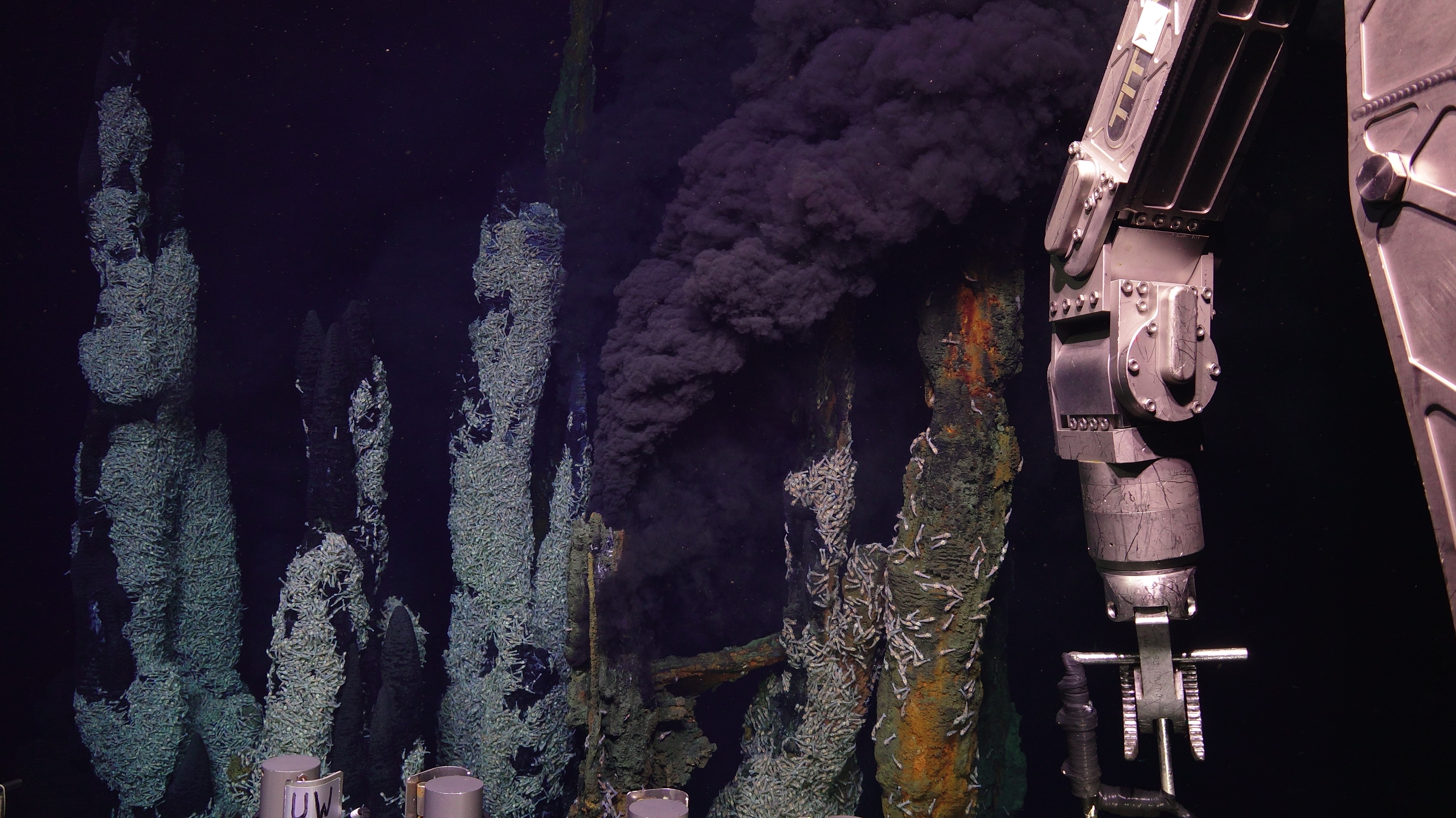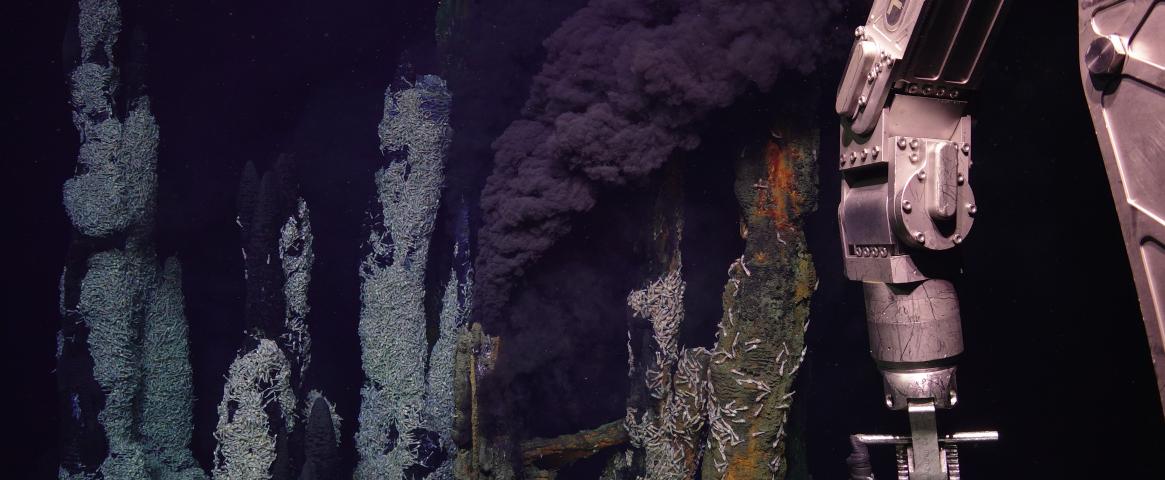By Zena Jensvold
Viruses deserve their bad reputation. These microscopic, infectious agents cause pandemics and kill millions of people each year. But viruses do much more than kill – they help orchestrate a stunning diversity of life in the ocean. Deep below the surface, marine viruses form distinct communities around deep-sea hydrothermal vents and may shape microbial populations, a new study suggests.
Along with marine microbes, such as bacteria and archaea, viruses thrive around hydrothermal vents that can spout water reaching temperatures of 400 degrees Celsius. Each vent on the sea floor supports a unique ecosystem creating “lots of little laboratories where you could have different experiments going on,” says Dr. Rika Anderson, a bioinformatician at Carleton College. The diversity among vents provides an opportunity for life to evolve in unique ways and under different conditions. Researching these distinct ecosystems may hint at the role viruses may have played to influence life in its earliest days, she says.

Anderson and her team sent remotely operated vehicles almost 3 miles deep to survey the viral populations around vents along the Juan de Fuca Ridge in the Pacific Ocean and Mid-Cayman Rise in the Atlantic. The samples from the two different locations had less than 1 percent of viruses in common, even though many microbial species are found in both oceans. Those from sites 20 kilometers apart, along the Mid-Cayman Rise, only shared 14 percent of the same viral families, the researchers report in a preprint posted June 4 on Biorxiv.1
When infecting microbes, viruses incorporate their own DNA into their hosts’ genomes. The microbes can use and evolve with these new DNA sequences. This is how marine microbes gained the ability to break down chemicals that are created in hydrothermal vents for energy, explains Dr. Karthik Anantharaman, a microbiologist at the University of Wisconsin-Madison. Anantharaman collaborates with Anderson but was not part of this project. By enriching their hosts, this new source of energy allows viruses to proliferate, he says.
These inserted viral DNA sequences act as flags that allow scientists to track viral infections in microbes. By scouring the microbial DNA for viral sequences, we quantified the diversity of viruses that are found infecting microbes at each vent, says Elaina Thomas, a biologist who was part of the research team while at Carleton College. The scientists found that the viral diversity at these vents create separate ecosystems where microbes could be evolving in distinct ways, which Anderson and her team plan to study in greater depth.
This technique of finding viral DNA in microbial genomes is a tried and tested method, says Dr. Joanne Emerson, a microbiologist at the University of California-Davis who was not involved with this study. This method pinpoints the viruses that are actively infecting microbes, giving us a better understanding of how viruses influence the evolution of these microbes, Emerson explains.
The diversity at deep sea vents may help us understand how life originated on Earth and may be supported on other planets. Scientists theorize that life on Earth may have begun at these hydrothermal vents and suspect that similar environments on other planets may harbor microbial life. Providing heat and nutrients, these vents make an ideal ecosystem for life to evolve. If each vent is a diverse community in the form of separated oases, it gives life multiple chances to kick start and evolve in distinct ways.
Zena Jensvold is Biochemistry PhD student at the University of Wisconsin-Madison. Follow her at @Zena-Jen on twitter or email her at zjensvold@gmail.com.
This story was produced as part of NASW's David Perlman Summer Mentoring Program, which was launched in 2020 by our Education Committee. Jensvold was mentored by Caroline Wilke.



